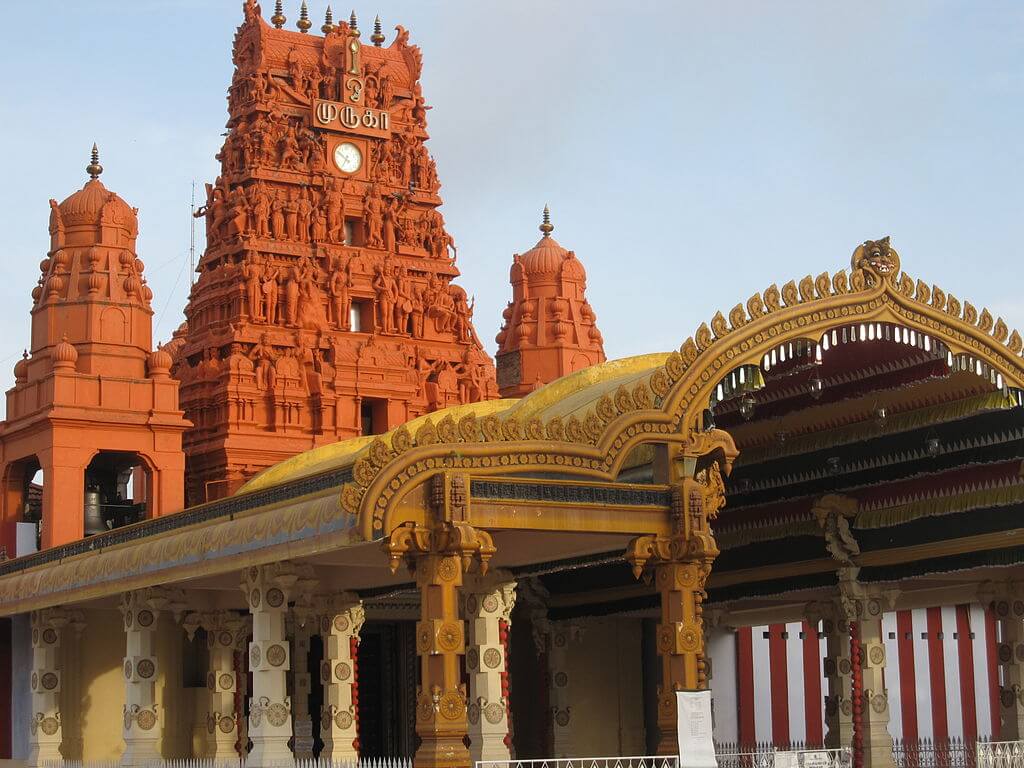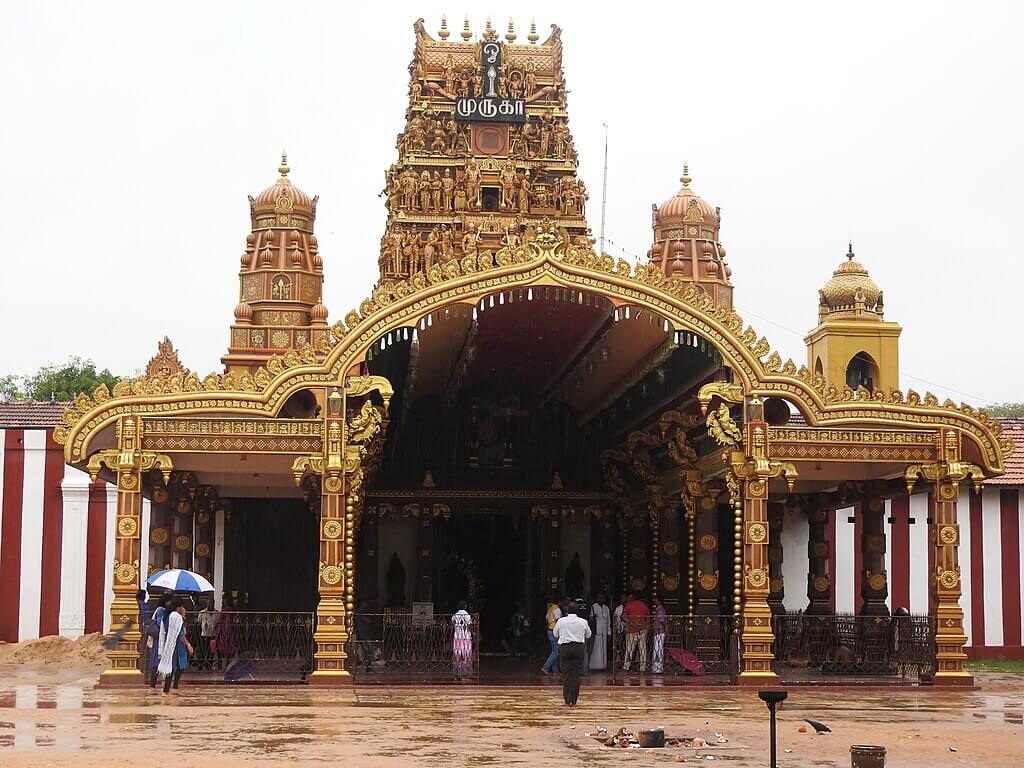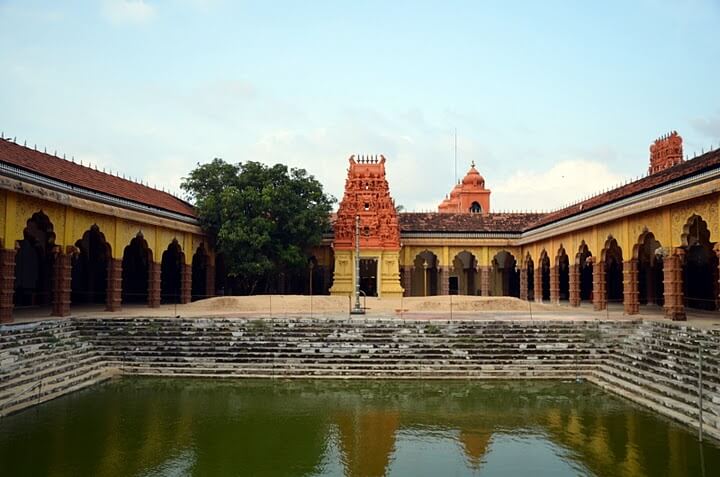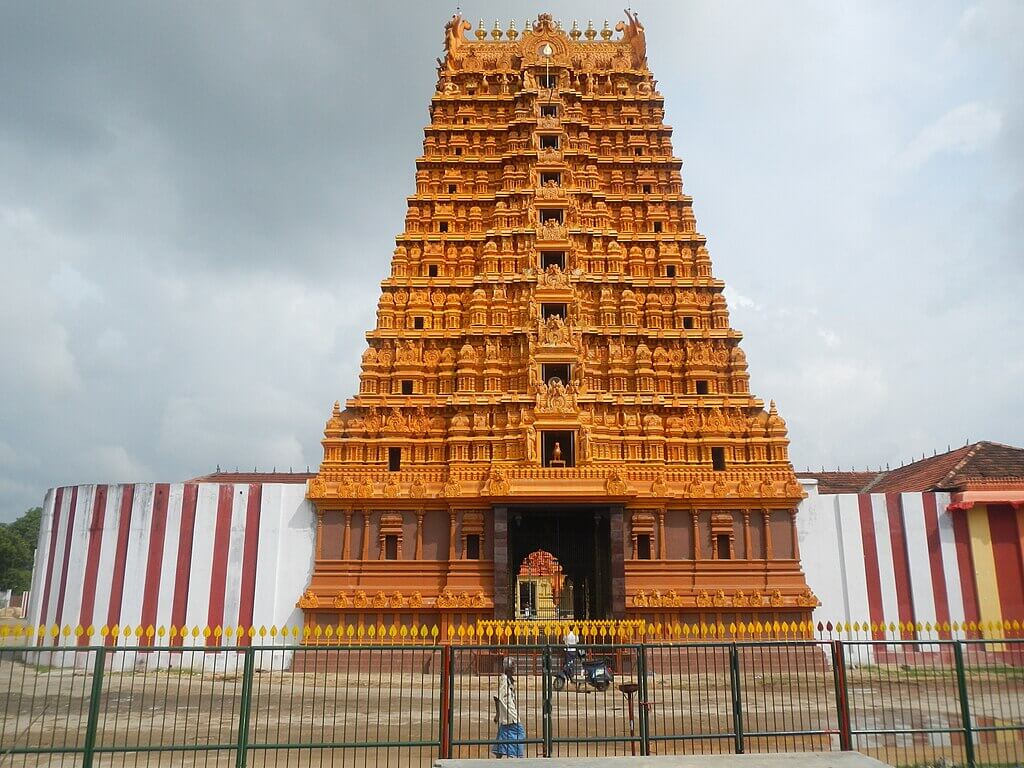Nallur Kovil: Where History, Gods, and Colour Collide in Jaffna

Wikimedia Commons – Wikimedia.org
Why Go?
Imagine a place where the air hums with the sound of temple bells and ancient chants. The scent of incense and jasmine flowers hangs heavy, and every corner bursts with vibrant colour. This is Nallur Kandaswamy Kovil, not just a temple, but the living, breathing heart of Jaffna in northern Sri Lanka.
Standing under the warm Sri Lankan sun, you’ll see its magnificent golden gopuram (gateway tower) reaching for the sky, a beacon of faith for centuries. Nallur isn’t just a building to be admired from afar, it’s an experience. It’s a place where history feels incredibly present, where you can witness deep-rooted traditions that have survived through thick and thin. It’s a journey into the soul of Tamil culture.

The Travel Guide
Best Time to Visit
Nallur offers two very different, yet equally amazing, experiences depending on when you go.
- For the Spectacle (August – September): This is when the temple hosts its massive annual festival, the Nallur Festival or Mahotsavam. For 25 days, the grounds transform into a whirlwind of activity. The air fills with music, streets are packed with devotees, and colourful chariots are pulled in grand processions. It’s crowded, intense, and utterly unforgettable—a true cultural immersion. The weather is hot and humid, but the energy is electric.
- For Quiet Reflection (December – March): If you prefer a more peaceful visit, this is the perfect time. The weather is more pleasant with less rain, and the temple grounds are calmer. You can explore at your own pace, sit and observe the daily rituals (pujas), and truly soak in the spiritual atmosphere without the festival crowds.
What to Do
1. Experience a Puja Ceremony: The temple has several prayer ceremonies throughout the day. The rhythmic chanting, the ringing of bells, and the offerings of fire and flowers are mesmerizing. The main ceremonies are usually early in the morning and in the evening. Check the timings when you arrive.
2. Walk Clockwise Around the Temple: It is tradition to walk around the central shrine in a clockwise direction. This path, called the pradakshina, is a meditative experience. As you walk, you’ll see smaller shrines dedicated to different deities, each with its own story.
3. Admire the Architecture: The temple is a stunning example of Dravidian architecture. Look for the intricate carvings on the towers, the beautifully painted ceilings, and the large sacred tank (pond) called the theertham outside the main walls. It’s a peaceful spot for a moment of quiet.
4. Explore the Surrounding Market: Just outside the temple, you’ll find small shops selling everything from fresh flower garlands and coconuts for offerings to sweet treats and religious icons. It’s a great place to see local life in action.

Getting Around
Jaffna is the main city in the north, and Nallur is one of its famous suburbs.
- From other parts of Sri Lanka: The train journey from Colombo to Jaffna is a classic, offering beautiful views of the changing landscape. You can also take a bus or fly into the nearby Palaly Airport.
- Within Jaffna: The easiest way to get to Nallur from your hotel is by tuk-tuk (a three-wheeled auto-rickshaw). They are everywhere! Just agree on a price with the driver before you start your journey. For a slower pace, you can also rent a bicycle to explore the relatively flat area.
Travel Tips
- Strict Dress Code: This is the most important rule. Men must remove their shirts and be bare-chested inside the temple. They must also wear a sarong or veshti to cover their legs (no shorts or trousers). Women must have their shoulders and legs covered—a sari or a long skirt/trousers with a shawl is perfect. You can often rent or buy these garments at nearby shops.
- Photography: Photography is usually forbidden inside the main temple complex to maintain its sanctity. You can take pictures of the grand exterior, but always be respectful and put your camera away when you enter the sacred areas.
- Connect with Locals: A simple smile and a “Vanakkam” (the Tamil greeting for ‘hello’) goes a long way. People are generally friendly, but remember this is a place of worship, not just a tourist site. Observe quietly, follow the customs, and you’ll be welcomed warmly.
Hidden Histories & Old Stories
The name “Nallur” translates to “Good Town,” and it was once the capital of the Jaffna Kingdom. The original temple, a grand structure from the 15th century, was completely destroyed by the Portuguese in 1621. For over a century, the faith was practised in secret.
The temple you see today was built in the 18th century during the Dutch period, not on the original site, but close by. It started as a small, humble building and has been expanded and embellished by devotees over generations. Every carved pillar and painted ceiling is a testament to the resilience of a community determined to rebuild its cultural heart. It’s a powerful story of loss and rebirth.
Past Travelers’ Stories
Imagine a British official visiting Jaffna in the late 19th century. In his diaries, he might have written about the stark contrast between his orderly, colonial world and the “riot of colour and sound” at Nallur. He would have been baffled by the sight of men with bare chests covered in holy ash and the sheer intensity of devotion he saw during a festival procession—something so profoundly different from the quiet hymns of his church back home. These early encounters show just how unique and powerful the spiritual energy of Nallur has always been.
Your Journey Awaits
Nallur Kandaswamy Kovil is more than just a destination; it’s an experience that stays with you. It’s a chance to step into a different world, one built on centuries of faith, art, and history. You’ll leave not just with beautiful photos, but with a deeper understanding of Sri Lanka’s rich cultural tapestry.
